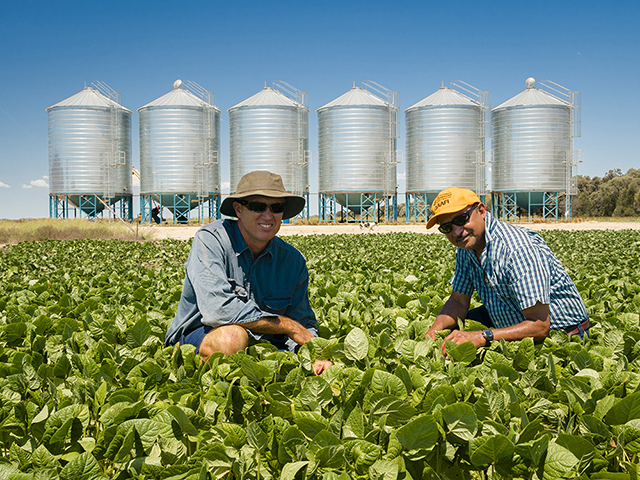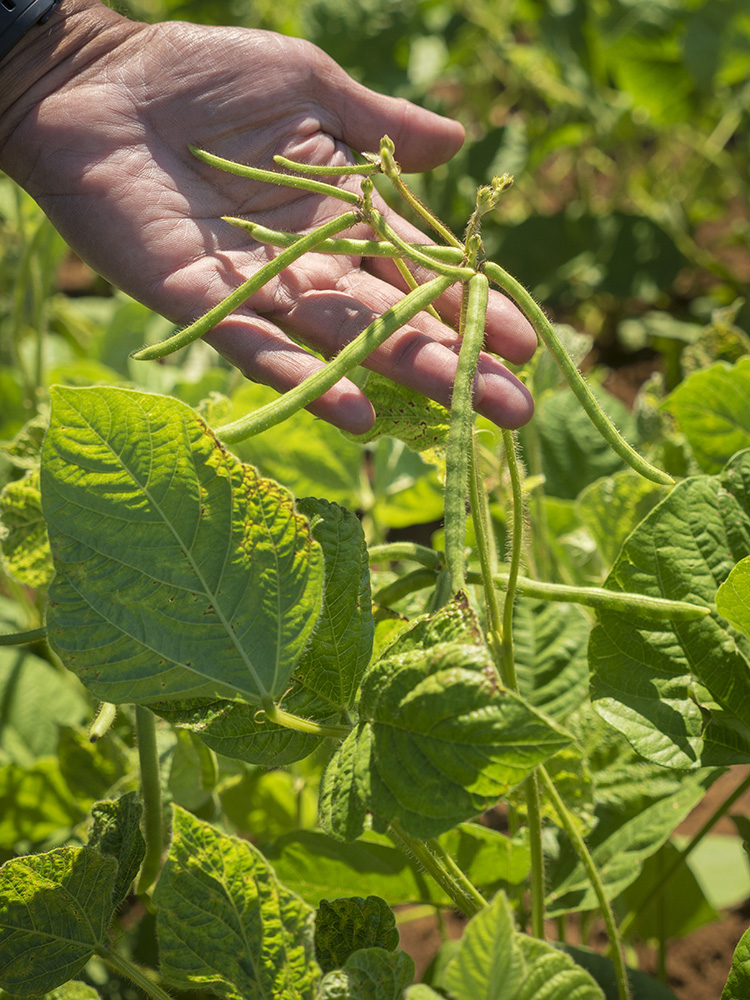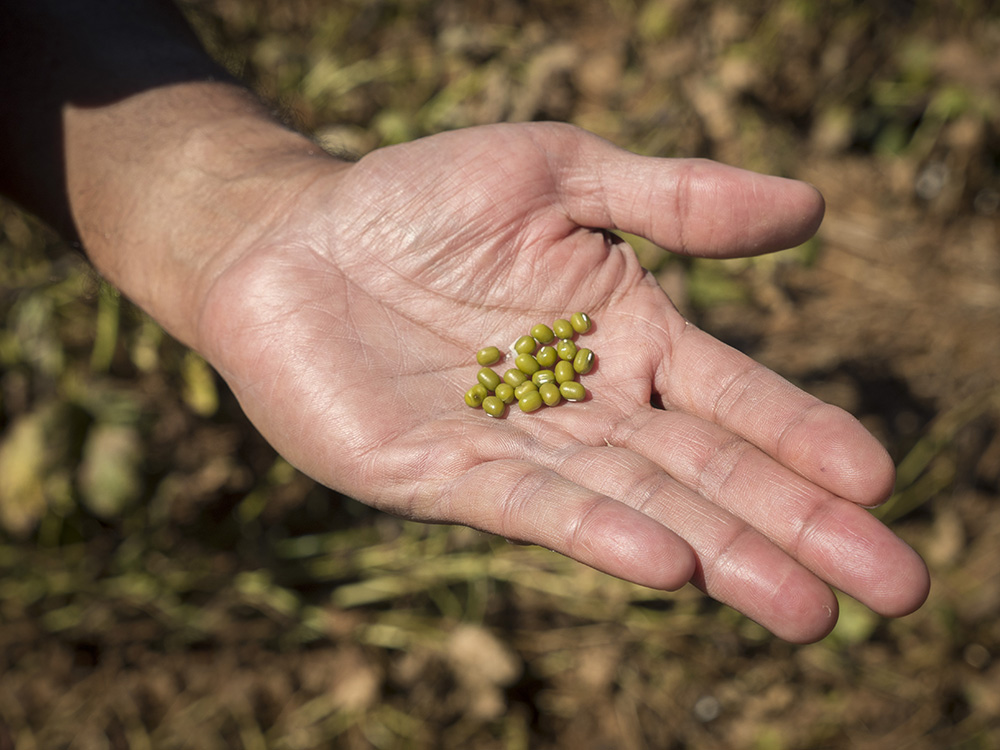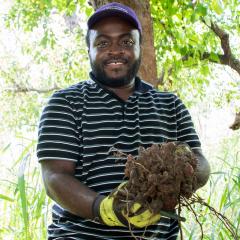Grower Wade Bidstrup realised the true potential of mungbeans after treating them as a ‘real’ crop and applying specific research-based agronomy.
 Wade Bidstrup’s first experience growing mungbeans was not a good one. Sowing the seed directly into that season’s wheat stubbles and with little moisture to draw on, they yielded 0.2 tonnes per hectare.
Wade Bidstrup’s first experience growing mungbeans was not a good one. Sowing the seed directly into that season’s wheat stubbles and with little moisture to draw on, they yielded 0.2 tonnes per hectare.
“It was a disaster,” he says. “I swore I would never grow them again.”
But that was ten years ago and since then intelligence around mungbean agronomy has grown, along with their market value and the development of superior varieties, to make the pulse a far more attractive option.
These days at Mr Bidstrup’s Warra property on the Darling Downs in Queensland, mungbeans are a mainstay of his rotation and represent the majority of his summer cropping regime. This season, he is harvesting 310ha of mungbeans, along with 60ha of sorghum and 40ha of maize.
“If you grow them properly they are a really profitable crop,” he says. “In fact, mungbeans are our main summer crop now.”
Mungbeans are today a great asset to his enterprise, Mr Bidstrup says, with high prices providing a reliable income stream and flexible sowing times spreading risk.
On top of that, they leave the paddock in good shape for winter crops, helping to control weeds while adding organic matter through a shallow root system that does not remove too much moisture. The only downside, Mr Bidstrup believes, is that mungbeans produce minimal stubble and therefore minimal ground cover.
Mr Bidstrup reintroduced mungbeans seven years ago after witnessing a friend’s success with the crop. And second time around, he took a more considered approach. “I started treating them like a ‘real’ crop,” he says. “And I’ve never looked back.”
 As a mark of his respect for the crop, Mr Bidstrup became involved with mungbean research and this year, for the third consecutive year, he is hosting a series of QAAFI’s agronomy trials lead by Dr RCN Rachaputi. These trials, he says, have helped establish best practice for mungbean row spacing and seeding rates.
As a mark of his respect for the crop, Mr Bidstrup became involved with mungbean research and this year, for the third consecutive year, he is hosting a series of QAAFI’s agronomy trials lead by Dr RCN Rachaputi. These trials, he says, have helped establish best practice for mungbean row spacing and seeding rates.
Trials with mungbeans sown with 250-millimetre, 500mm, 750mm and one-metre row spacings showed that narrower row width resulted in higher yields. For Mr Bidstrup, the trials confirmed he was on the right track with the 500mm row spacings he had used since reinstating mungbeans into his system.
“We always thought the narrower row width was better,” he says. “The plants have a bit more space to capture more sunlight so it just stood to reason for us.”
Mr Bidstrup says that while narrower rows may cost more in new equipment for growers commonly growing mungbeans on 1m rows in line with other crops such as sorghum, cotton and maize, the outlay was worth it.
“It’s a big expense setting up your planter differently, but if you can achieve a 20 per cent yield increase through narrower rows, that is a big jump in profits,” he says.
The Bidstrup property has also been hosting plant population trials led by QAAFI’s Dr Rachaputi, demonstrating the optimal rates for maximum pod production and corresponding yield gains. Seeding rates in the region can range from 150,000 to 400,000 seeds/ha, but if this number is too high, Mr Bidstrup says, the plants “choke each other out of sunlight and moisture” and if it is too low they will grow excess foliage and not enough pods.
“It’s a balancing act,” he says. “You can go too thick and you can go too thin –we’ve found what that right number is and that it’s different for different varieties.”
The trials on his property, he says, indicate peak yields for Crystal occur with a rate of about 240,000 seeds/ha, while for Jade-AU, 280,000 seeds/ha produce the highest yields. Mr Bidstrup has taken this advice on board, increasing his seeding rate and seeing yields up to 2.5t/ha.

“If you grow them with the right seeding rates, row spacing and on long fallow you’ll get the high-yielding 1.7 to 2.5t/ha crops,” he says. “But when you grow them on short fallow or double-crop them into wheat or barley, that’s when you’ll get the 0.5t/ha crop and that’s when people decide to never grow them again.”
Mr Bidstrup has no regrets giving mungbeans a second chance. He says the major step-change for his own fortunes came when he started treating them with respect, with specific agronomy and paddock preparation, rather than as a second thought.
“They yield really well and even if its dry over summer they hang in there and get a respectable yield. With the price of them lately, it’s a lot more profitable than any other crop you could grow in summer,” he says.
Growers and marketers have been able to capitalise on the increased price of mungbeans – fuelled by the growing middle class in Asia, and specifically India, to a consistent price about $1300/t – by reliably providing a high-quality product.
This, Mr Bidstrup says, is thanks to Queensland Department of Agriculture and Fisheries breeding research – some undertaken on his property – producing varieties that are higher yielding than the “pretty ordinary” varieties of the past and more resilient against variable weather and lodging.
Meanwhile the QAAFI trials, funded by the GRDC, continue this season at his property on row spacings and seeding rates as well as the role of mungbeans fixing nitrogen in the soil according to those widths and rates.
Rolling out the trials over several seasons ensures results are tested under a range of conditions, Wade says, adding to the growing bank of knowledge about the crop.
What he knows already, is that mungbeans will continue to play a big role in his system – providing the price stays right. “You just can’t beat them with anything else,” he says. “They are very compelling to grow.”
This project is jointly supported by the Department of Agriculture and Fisheries and UQ.



